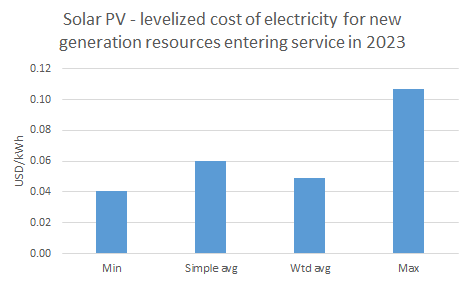New laws - FDI and Solar
/Corrected tariff amounts. I had forgotten a 0, so it looked like 76.9 cents vs 7.69 cents per kWh.
Vietnam has two new circulars regarding foreign direct investment (FDI) and the new solar incentives. The FDI one is a bit older, but it did lead me down an interesting path of learnings.
First, about FDI. We got a new circular (06) to replace the old circular (19) from 2014. Obviously anyone investing in Vietnam really needs to make sure their lawyer knows all of this stuff, but for our purposes, the changes are not major. Please, just pay someone to deal with all this. It’s v. confusing.
Back to basics: If you were a foreign invested enterprise (FIE), you need to have/open a direct investment capital account (DICA). The definition of FIE was a bit unclear, so this circular clarifies it. If you own 51% of capital, you are an FIE. Also, if you are doing a PPP or entering into business cooperation contracts (BCC, whatever that is). There are some changes to mergers as well. The important thing is If you are all of them, .
Basically, you need a DICA if you own 51% of a business in Vietnam, and you need to run your money through it. The main problem, according to these lawyers, is that if ownership fluctuates between 49% and 51%, it’s gonna be a real pain.
Looking a bit closer, a DICA can be quite onerous for investors. To transfer money, the bank may require “supporting documents.” Also if capital is transferred, it can only be done in VND, unless both sides are non-resident. If it was a resident and a non-resident, it would have to be in VND. Which might be a pain for the non-resident selling shares, because it (or s/he) would only get VND.
And it looks like you can only remit money once a year, or when an enterprise is closed. Plus, the bank may not be willing to convert VND at the time. What a pain. But that sure doesn’t seem to be stopping anyone…
Second, about solar, much more fun! The big deal is that we finally have new feed-in-tariffs (FITs), at least in draft form. In 2017, the government set out FITs, but they expired on June 30, 2019. So everyone was waiting to see what they would be. Well, here are the draft prices:
Floating solar power projects: $0.0769/kwh
Ground-mounted solar power projects: $0.0709/kwh
Rooftop solar power projects: $0.0935/kwh
More details: The FITs are fixed for 20 years, as long as the project is done between July 1, 2019 to December 31, 2021. These are down from the previous price of $0.935, although existing solar projects are grandfathered in (lots of details around this that I am just going to ignore).
Are there any issues? Well, the big concern is there is no regional pricing. Basically, prices should have been different between the north, which doesn’t get much sun, and the rest of the country. That way not everyone would build in the south and overload the grid.
Source: EIA
Lower prices will mean less incentive to build solar. I am 100% for high FITs, because I believe that it is extremely important for both Vietnam and the world that we produce more energy from renewables. Solar and renewables are already a big part of the energy mix, in terms of new build.
The only mitigation is that these are still relatively high prices compared to the cost of producing solar. The US Energy Information Administration has some estimates for new solar. The cost per kWh depends on the location of the panels (more sun = cheaper), but let’s look at the weighted average - it is just $0.04 per kWh. That’s less than half of the rooftop FIT and still provides a pretty good margin for the ground-mounted and floating projects. Of course, there are other costs that would be different for Vietnam, but this isn’t bad.
In my search for data around this, I found a very cool chart that shows exactly where solar is most effective in Vietnam. You can see it here.


